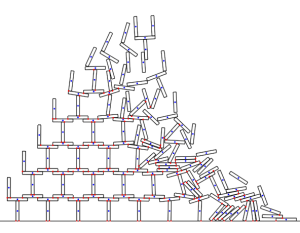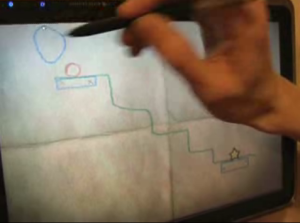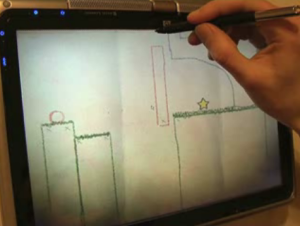Python Physics: Difference between revisions
Jump to navigation
Jump to search
Crazy-chris (talk | contribs) mNo edit summary |
Crazy-chris (talk | contribs) m (+links) |
||
| Line 1: | Line 1: | ||
Simulating physical behaviour |
Simulating physical behaviour is both interesting and exciting for games, education and playful learning. There are a few open source 2D [http://en.wikipedia.org/wiki/Physics_engine physics engines] out there, and it seems [http://wiki.slembcke.net/main/published/Chipmunk chipmunk] (building on top of [http://www.box2d.org/ box2d]) is one of the most advanced. It also has python bindings ([http://code.google.com/p/pymunk/ pymunk]), and work is in progress on an API ([[pymunx]]) for easy usage in pygame, with a focus on olpc and the xo laptop :) |
||
Revision as of 10:51, 8 March 2008
Simulating physical behaviour is both interesting and exciting for games, education and playful learning. There are a few open source 2D physics engines out there, and it seems chipmunk (building on top of box2d) is one of the most advanced. It also has python bindings (pymunk), and work is in progress on an API (pymunx) for easy usage in pygame, with a focus on olpc and the xo laptop :)
Links:
YouTube Videos:
- Chipmunk: Domino Pyramid, Domino Stash
- Crayon Physics Deluxe (really nice physics game)
 |  |
 |  |